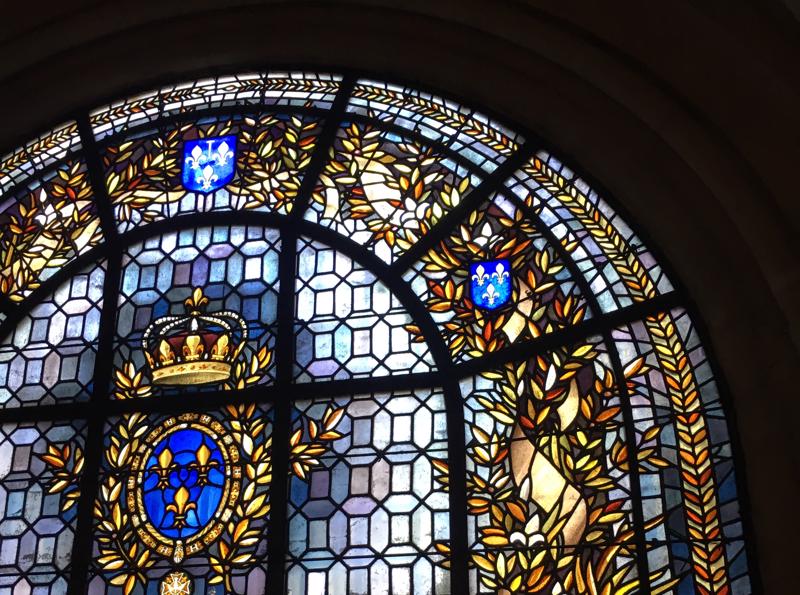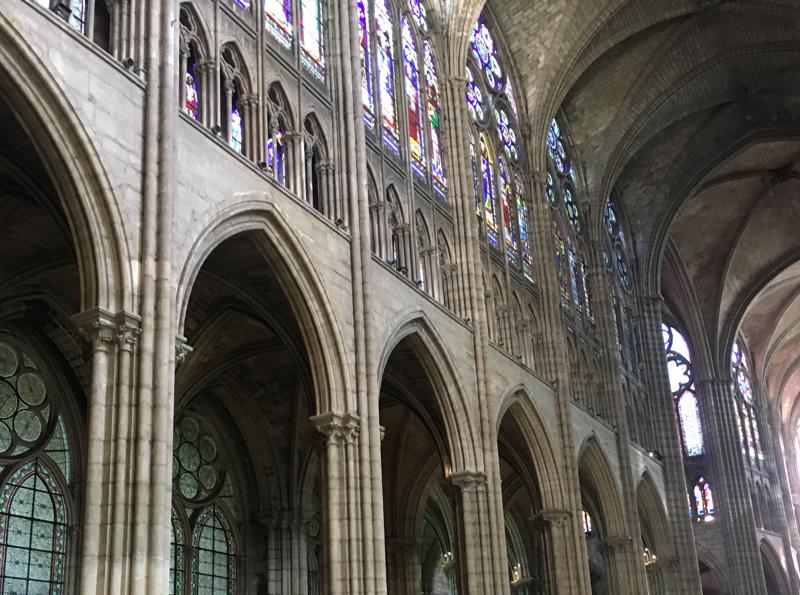Taylor's Diary
Basilique Saint-Denis was completed in the year 1144. This medieval abbey is located in the city of Saint-Denis not too far from Paris, France. The evolution of its religious architecture is broken into a few periods. This includes the facade from 1135 to 1140, the apse from 1140 to 1144, and the remaining parts from the time of Saint Louis from 1230 to 1280. It is named after a missionary bishop named Saint Denis and is also where the saint is buried. Many other well-known bishops are buried there as well. The basilica was deemed a place of pilgrimage due to it becoming the burial place for many French kings. It is well known for paving the way to Gothic architecture when the choir and facade were reconstructed. While the basilica reminds of some I have seen in Paris like the Notre Dame, it is unique in some ways. What makes it very unique is how it incorporates architectural styles from multiple periods. It includes renaissance and Gothic styles, but includes unique burial sites and treasures. Although the Notre Dame is a darker looking style, the Basilica of Saint-Denis looked slightly brighter to me. Upon sight, the phases of buildings meld together, but they are also somewhat noticeable. Its central nave and lower aisles qualifies it as a basilica. The arches and stained-glass windows give it a medieval, Gothic look. The new choir was a major part of the renovations. It involved incorporating many windows that would point to the choir as well as different columns directed at it as well. This was to shed as much light on the choir without losing the structure and integrity. All of these things come together to make this beautiful basilica so unique and historical.
taymthom
22 chapters
16 Apr 2020
Basilique Saint-Denis
Basilique Saint-Denis
Basilique Saint-Denis was completed in the year 1144. This medieval abbey is located in the city of Saint-Denis not too far from Paris, France. The evolution of its religious architecture is broken into a few periods. This includes the facade from 1135 to 1140, the apse from 1140 to 1144, and the remaining parts from the time of Saint Louis from 1230 to 1280. It is named after a missionary bishop named Saint Denis and is also where the saint is buried. Many other well-known bishops are buried there as well. The basilica was deemed a place of pilgrimage due to it becoming the burial place for many French kings. It is well known for paving the way to Gothic architecture when the choir and facade were reconstructed. While the basilica reminds of some I have seen in Paris like the Notre Dame, it is unique in some ways. What makes it very unique is how it incorporates architectural styles from multiple periods. It includes renaissance and Gothic styles, but includes unique burial sites and treasures. Although the Notre Dame is a darker looking style, the Basilica of Saint-Denis looked slightly brighter to me. Upon sight, the phases of buildings meld together, but they are also somewhat noticeable. Its central nave and lower aisles qualifies it as a basilica. The arches and stained-glass windows give it a medieval, Gothic look. The new choir was a major part of the renovations. It involved incorporating many windows that would point to the choir as well as different columns directed at it as well. This was to shed as much light on the choir without losing the structure and integrity. All of these things come together to make this beautiful basilica so unique and historical.


1.
The First 48 Hours
2.
Memorable Moment
3.
Chateau de Versailles
4.
Arts & Humanities
5.
My February Excursion!
6.
Notre Dame/Old Paris
7.
Tenaciously Missional #1
8.
The Louvre
9.
Paris People
10.
Challenges in Paris
11.
Tenaciously Missional #2
12.
Musee d'Orsay
13.
Spring Break Adventures
14.
March DIY Excursion
15.
Basilique Saint-Denis
16.
French Cuisine
17.
French Currency
18.
Religious Experiences
19.
April DIY Excursion
20.
Normandy
21.
Fromagerie
22.
Easter in Paris